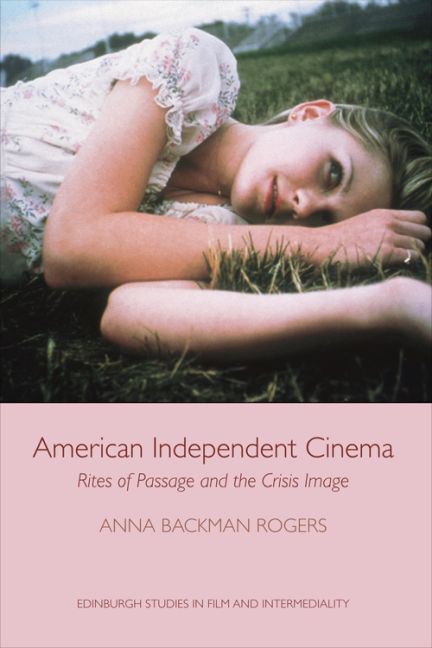Conclusion: The Crisis Image – Mumblecore and Beyond
Published online by Cambridge University Press: 12 September 2017
Summary
By way of conclusion and further development of the notion of a cinema of crisis, I will extend briefly this study's theoretical framework to the work of Harmony Korine, Kelly Reichardt and the ‘Mumblecore’ movement – or, more specifically, the work of Lena Dunham. However, in order to outline these further facets of a cinema of crisis, it is necessary at this juncture to summarise what its salient features are. I argued at the beginning of this book that the dominant and established approach to American independent cinema in critical and scholarly studies is to categorise it in terms of economic, production and distribution strategies. While this is important and useful, this focus on the meaning and context of the very term ‘independent’ has resulted in a paucity of material on the aesthetics and poetics of this kind of cinema and its specific effect or affects. By focusing on the themes of crisis, liminality, transition, mutation and transformation, I have tried to emphasise the ways in which American independent cinema appropriates and transfigures the tropes of European ‘Art’ cinema (as set forth in Gilles Deleuze's Cinema 2) for its own particular purposes in order to challenge entrenched modes of thought.
To return to Bordwell's assessment, which I referenced implicitly in my opening, American independent cinema does not merely ‘copy’ the central tenets of art cinema but transforms them in a highly ‘complex’ manner (2008). The synthesis of anthropological and Deleuzian material, used as a theoretical framework, has allowed me to examine and characterise this corpus of films in a number of useful ways, as: a cinema of crisis and transition; a cinema of liminality and ambiguity; a cinema that employs genre subversively; an existential cinema; a cinema of time and thought that breaks apart received ways of thinking and encourages creative modes of thought; and a cinema that travels between the movement and the time-image regimes. More specifically, I have characterised American independent film as one that explores situations and images of crisis; often this relates to a problem of narrative (for instance, how one relates a situation of crisis or initiates the process of understanding it, as in Van Sant's Elephant), but as we have seen, this is made manifest on a formal level.
- Type
- Chapter
- Information
- American Independent CinemaRites of Passage and the Crisis Image, pp. 149 - 159Publisher: Edinburgh University PressPrint publication year: 2015



